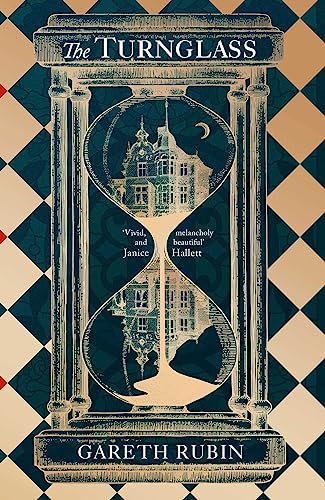The Turnglass
Essex, 1881. Idealistic doctor Simeon Lee accepts a job nursing a distant cousin Oliver Hawes, who is apparently being poisoned in his isolated island home. The only other permanent resident of Turnglass House is Oliver’s sister-in-law Florence, incarcerated behind a glass wall since she allegedly killed her husband in a jealous fit. But Oliver’s journal, concealed within another book, tells a different story…
California, 1939. Would-be actor Ken Kourian is struggling until he befriends wealthy Oliver Tooke. When Oliver dies suddenly, Ken isn’t convinced it’s suicide and begins to investigate his past, including the kidnapping of Oliver’s brother in childhood and the presumed drowning of their mother Florence. The only clues lie in Oliver’s recently published novel, about a doctor called Simeon Lee…
Rather than being a conventional dual-period novel, this is what’s known as a tête-bêche novel: two interlinked novellas printed back-to-back so the book can be read from either end or, indeed, alternating between stories. The Victorian story draws heavily upon the tropes of classic Gothic fiction – Jane Eyre, The Woman in Black, The Private Memoirs and Confessions of a Justified Sinner – while the more modern tale is in the style of a cynical, wisecracking 1940s film noir.
The fact that I solved one of the mysteries before the characters proves that the author plays fair by hiding clues in plain sight. However, I can’t help questioning the logic of a fire that apparently starts on the ground floor, destroys the roof of the house – yet leaves the first floor and main staircase almost unscathed. And isn’t the North Sea too cold for Sargasso weed?
It’s all very clever, but with the exception of Ken, I felt distanced from the characters. This ultimately made me feel the book was hollow at its core.










